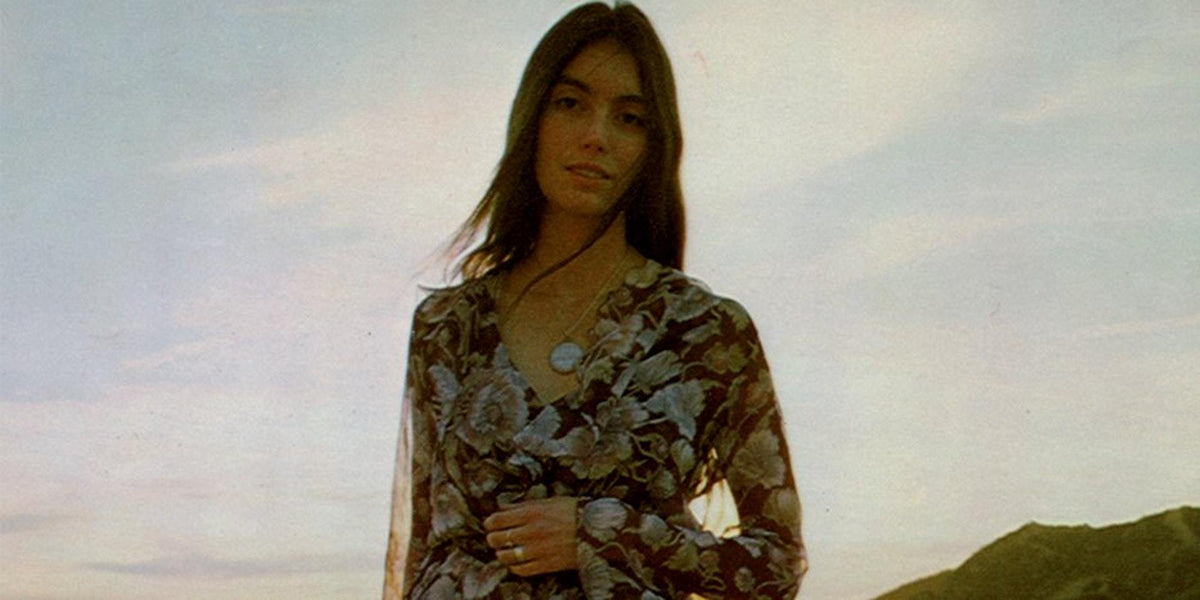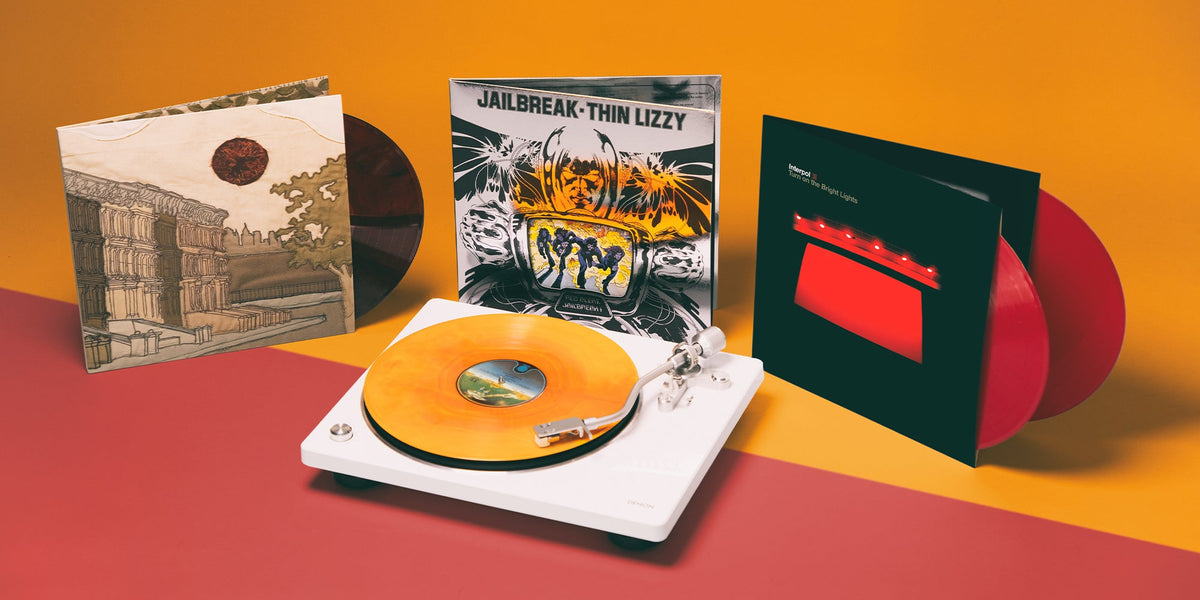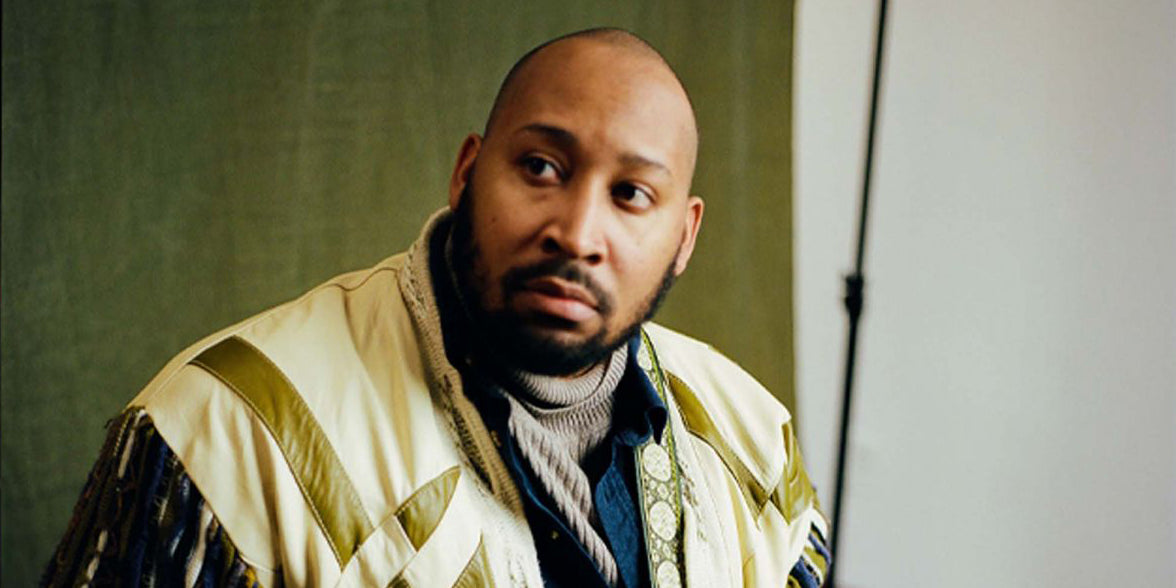‘I’m Wide Awake, It’s Morning’: An Incomplete Oral History
Get the story of the indie rock classic from Bright Eyes members and collaborators
For the VMP edition of I’m Wide Awake, It’s Morning, our July 2022 Essentials Record of the Month, we worked closely with Bright Eyes to tell the story of the album. The result is this incomplete oral history, which serves as the Listening Notes for the record, featuring Conor Oberst and Nate Walcott. Read below to hear from both of them directly, alongside other band members and contributors.
Conor Oberst: I moved to New York City at the beginning of 2003, and I remember writing a lot of these songs in an apartment on 10th Street and Avenue B. One of the things I think is cool about this album is that it’s so New York-centric, but it’s also not. It’s the point of view, obviously, of a kid from Nebraska that just moved to New York City — everything’s strange and exciting and you’ve got to figure it out. I had toured a lot already, but I’d never lived anywhere else besides Omaha. I felt like I was ready to take a plunge and do something new. And at that point, it wasn’t the easiest thing to be in Omaha, because everybody knew who I was and it was a little hectic.
I had made a bunch of good friends in New York, and it seemed interesting to be anonymous in a big place where no one cared. There was inspiration all around: I was seeing things I’d never seen before, every time I stepped out the apartment door. I was getting more politically aware, having different kinds of conversations with different kinds of people — a lot of them were older than me and had perspectives I hadn’t encountered before, and it gave me new things to write about. It was the era of George W. Bush and there were these giant protests against the second Iraq War, and we all walked up to one of them. It was my first time marching in a protest, so that was inspirational for sure. I always wrote a lot of songs, and I was writing a lot then, but being in New York definitely added fuel to the fire.
Jesse Harris: I’d met Conor after a Bright Eyes show at Irving Plaza a couple years earlier, and we became friends when he moved to the city. We hung out a lot that year, and even played a few random gigs at the Knitting Factory and the Living Room and this one Halloween show at the Housing Works Bookstore where Conor had me dress up like a king, with a crown and giant cape. He’d been working out some of the Wide Awake songs on tour, and one night we went to a studio uptown to record early versions of a couple of them. We did “Landlocked Blues,” and I loved it so much immediately. At one point, Conor said he wasn’t going to put it on the album and I was so devastated, I got down on my knees, like, “You’ve gotta put ‘Landlocked Blues’ on the record!” The whole concept of I’m Wide Awake, at least according to Conor and [Michael] Mogis, was that they felt like they had been more produced on the previous albums, and wanted to go for live takes for this one.
Conor Oberst: Whatever I do, there’s always of bit of a reaction for me to want to do something pretty different for the next thing. I kind of look at it like I’m rotating the crops. I remember Michael, even on other albums, had encouraged me: “Maybe this one should be just you and a guitar.” I was always like, “We gotta put some stuff on this, for me to find it interesting.” But this group of songs seemed like they would sound good executed really simply. So the idea was basically, “Let’s make a ’70s folk album through and through. No trickery. Just play the songs and keep it pretty pure.”
Conor Oberst: It was February 2004, and me and Jesse and [bassist] Tim [Luntzel] got on a really little plane from New York to Lincoln, Nebraska, where Mogis’ studio was at the time. I didn’t really like flying at that point anyway, and this was one of the craziest plane rides. I was thinking about being really excited about the songs and then it was like, “I might not even get to make this record,” like some kind of “Day the Music Died” plane crash shit. But we made it.
Jesse Harris: When I think of this album, I think of winter: winter in New York and winter in Nebraska. It’s like that lyric in “Lua”: “I know that it is freezing, but I think we have to walk.” It really conjures up the feeling of that time for me. In Lincoln, it was so cold — literally -5 degrees — and there had been a massive snowstorm, so there were piles of snow, so tall they were above your head. Most of the time we were holed up in the studio, but anytime we went outside it was like the Arctic. I remember one night walking with [drummer] Jason Boesel through the streets of Lincoln, and everything was frozen. These songs were written in a really cold winter and then recorded a year later in a really cold winter. But they have such fire, you know?
Conor Oberst: Mogis had been working out of Presto! for awhile already. We made Lifted and the first Desaparecidos record there. It was our first real studio with a control room and the glass and everything. Compared to our studio now, it was maybe a bit of a shithole, but I have such fond memories of that place. Recording the album only took a week. I had all of the songs written by the time we got to the studio, which is another reason why it went so fast.
Jesse Harris: For songs like “First Day of My Life” and “At The Bottom of Everything,” we were all in the same room, in a circle, the three of us, playing live — me on guitar, Tim on upright bass, and Conor singing. The whole idea was to capture something spontaneous and raw. For “At The Bottom of Everything,” the monologue had to be live, too, if Conor wasn’t happy with the monologue, the whole take had to be redone.
Conor Oberst: I always come in with opinions about the arrangements, but a lot of it just happens. We didn’t tell Jesse and Tim what to play, we just let them play and they played something cool. It was just kind of like, “These are our friends, these are the songs.” It wasn’t deeply planned out. The people that were there, we had obviously asked to be there, so we trusted them to do their thing.
Jesse Harris: Playing with Conor was just a very free thing. Some people, they ask you to play guitar with them, and then when you start, you suddenly feel really clamped down on. But Conor was always so supportive of whatever you played. It was a very warm atmosphere, musically.
Nick White: Conor was already far and away my favorite songwriter when I started playing with him in 2002. We had been touring pretty steadily on Lifted (Or The Story Is In The Soil, Keep Your Ear To The Ground), and around spring 2003, Conor began introducing some of the Wide Awake songs into the set. I was pretty blown away, to say the least. By the time we got to studio, we’d had the luxury of playing a good chunk of the material for the better part of a year. I think everyone could sense how good the songs were, and Conor had steered the sound into a more kind of Americana territory that really underscored the lyrics. I downloaded every Neil Young song I could find, and put all the ones with piano on repeat.
Nick White: At the time, “Train Under Water” was my favorite song to play live, and probably my favorite to record. I was falling in love with electric pianos and their warm timbre. The opening of the song still hits like it did the first time I heard it. “Poison Oak” is the same, with its giant swell and reluctant end. Recording “Land Locked Blues” was the very first time I ever played a vibraphone. Conor and Mike sat with me while I explored the way the sound of the instrument lingered until the pedal release sucked it away. They pushed drawbars with me on the organs until we found rich and expressive sounds. On some of the songs, like “Old Soul Song,” I tried to imagine what Conor might do if he played the song on piano.
Nate Walcott: I wasn’t playing keyboards much with the band at this point, mostly trumpet. I remember first playing “Old Soul Song” and “Road to Joy” on a European tour during the summer before the Wide Awake sessions. I was very much living in Chicago at the time. Although I had worked on a lot of stuff in the studio with Mike in the previous years, Wide Awake was actually my first Bright Eyes recording. I came in for just a couple days to record my parts; it was really quick. This album and the tour afterward ushered in a period where my role started to expand. I started playing more keyboards on the Wide Awake tour, and then one night towards the end of the Digital Ash in a Digital Urn tour, in the middle of the night on the tour bus, Conor said to me, “You’re in the band. The band is me, you and Mike.”
Conor Oberst: I remember that night. Nate had toured with us for years and it felt like he was already in the band, but he still lived in Chicago and I thought, “Walcott likes jazz music more and he’s sophisticated and plays with these other bands,” and I thought we would not be his first choice. I said, “We’d love to have you all the time, but I know you’re busy,” and he was like, “No, this is my favorite thing that I do.” I was like, “Really? Wow.” So that was sweet. Because he was kind of stoic and pretty hard to read back then.
Nick White: Some of the best parts of the recording were getting to hear clearly what the other band members had been working on. Looking at the album credits is like looking at a who’s who of people I love and admire. I loved listening to Mike and Nate’s interplay, with Alex [McManus]’s incredible guitar sounds, on “Road to Joy.” Jim [James]’s voice, Tim’s bass, and Jesse’s guitar were all new and very exciting to me.
Conor Oberst: It was one big kind of gang, at that point. Jesse and Tim were my new friends from New York, but everyone else except for Emmylou Harris was our ongoing circle. It was all pretty organic. Nick was in Tilly and the Wall and Jason was in Rilo Kiley, Jim and I had met a couple years earlier and become good friends, and we were all in bands that had toured together and hung out.
Maria [Taylor] has such a great voice, and she was definitely going to be singing on the album, but there was no one in our circle who had the kind of classic voice that I imagined on some of the harmonies. It was like, “Maybe we should just ask Emmylou [Harris].” Shoot for the stars kind of thing, thinking there’s no way she’s gonna say yes to this. But we sent her the songs and she said yes! Mogis and Maria and I flew to Nashville to record with her at one of those big crazy studios that looks like a church. And she was so gracious and cool. I remember we were sitting on a couch in the control room, and I was sitting next to her, and she said, “I want to make sure you guys like this.” And so the engineer played the song through the speakers in the control room and she’s sitting right next to me and she starts singing along to my voice and my words, and it was very overwhelming. I’m sure I was trying to play it cool. I’ll never forget the sound of her voice. Because I’d heard it for a lot of my life on recordings, but to have that voice not even through a microphone, just literally sitting next to you — that was a powerful moment for sure.
Maria Taylor: We all had grown up listening to Emmylou Harris and loving her. When I heard her sing right there in front of us, it was just too much. My eyes filled with tears and I started trembling. I had to leave the room and have a good cry. I think there are people who try with everything in their might to be successful or famous, and then there are people like Conor and Emmylou. With them it’s effortless. It was written before they were born. It was always going to be.
Jesse Harris: Conor is someone who, aside from his talent, which is so obvious, was also such a pleasure to be around. I loved his spirit and his generosity and his big heart. And I loved his songs! So it was a pleasure for me to play guitar with him. I’ve always admired his deep sincerity and his commitment to expressing something clearly and truthfully. He worked so hard, and that always impressed me — the energy he would put into things. He was always willing to go out there and make it happen and not be too precious about it.
Maria Taylor: Those years were the most productive and inspiring when it came to writing and recording. When they would record, they would start around 11 a.m. and end around 1 a.m., and then we would drink and hang out for a couple more hours. It felt different in those days because no one had families yet, or other jobs or commitments. There were no distractions. There was nowhere to go and nothing to do except record these songs. When Mogis shut off the lights and turned the alarm on, we all went straight to our beds until we saw each other with coffee in our hands the next morning. Everyone loved and respected each other. And there was always so much laughter during those long days in the studio. I remember Mogis, Conor and I laughing until we were crying most days.
Jesse Harris: Conor was just writing a lot of songs and living his life, and this album is a snapshot of that moment. And it’s funny because Wide Awake became a very defining album for Bright Eyes. I think it’s a lot of people’s favorite Bright Eyes album. I remember when it was done and I heard it for the first time, I just loved it so much, and I was so so happy and proud to have been a part of it, and I still am.
Conor Oberst, Jesse Harris, Nick White, Nate Walcott and Maria Taylor provided an inside look at I'm Wide Awake, It's Morning in this incomplete oral history.
Related Articles
Join the Club!
Join Now, Starting at $36Pages







